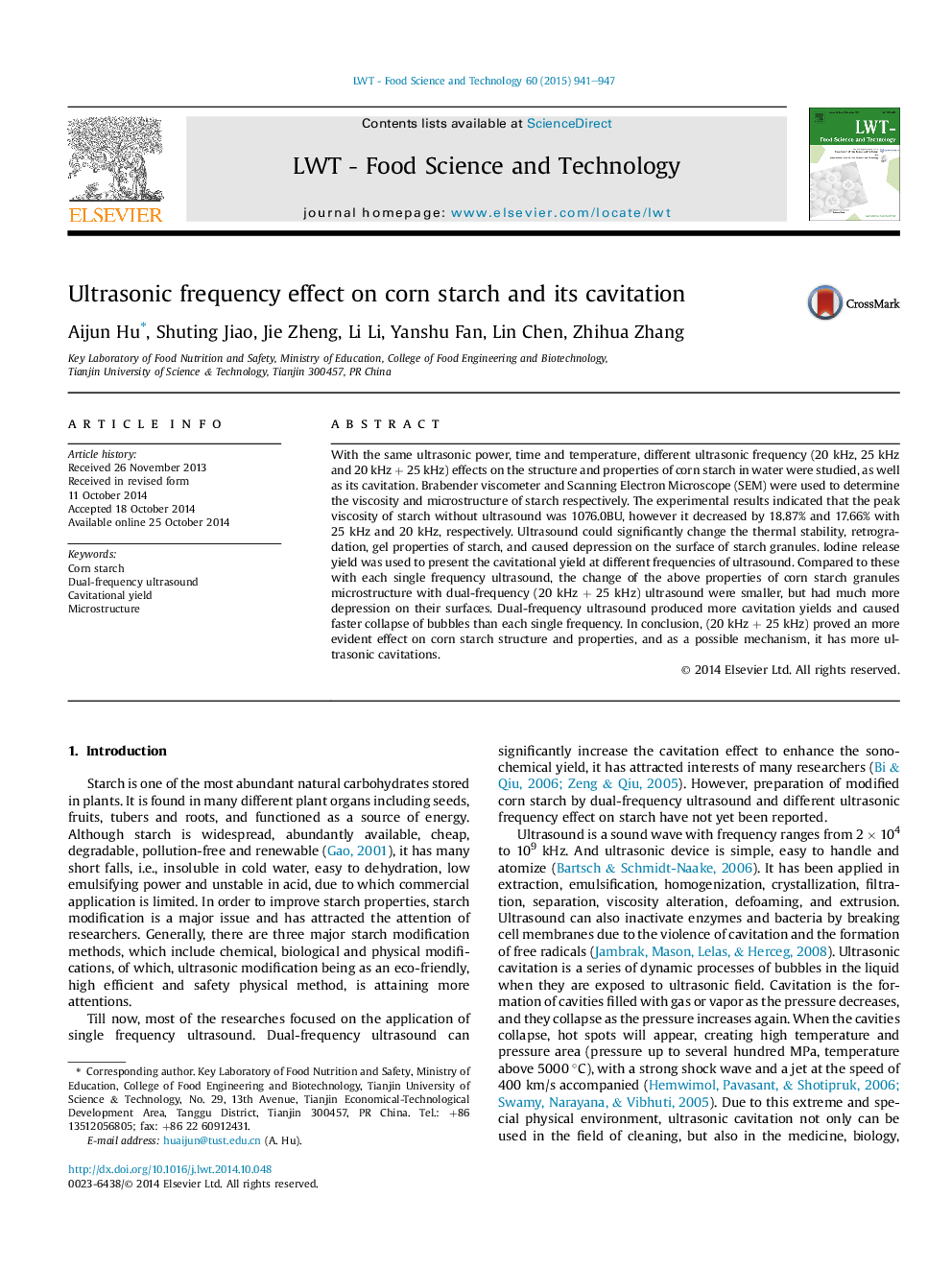| Article ID | Journal | Published Year | Pages | File Type |
|---|---|---|---|---|
| 6402485 | LWT - Food Science and Technology | 2015 | 7 Pages |
â¢Ultrasound was applied in corn starch modification.â¢Ultrasonic frequency effect and its cavitation were studied.â¢Ultrasound significantly changed the structure and properties of starch.â¢Dual-frequency ultrasound produced more cavitation yields than single frequency.
With the same ultrasonic power, time and temperature, different ultrasonic frequency (20 kHz, 25 kHz and 20 kHz + 25 kHz) effects on the structure and properties of corn starch in water were studied, as well as its cavitation. Brabender viscometer and Scanning Electron Microscope (SEM) were used to determine the viscosity and microstructure of starch respectively. The experimental results indicated that the peak viscosity of starch without ultrasound was 1076.0BU, however it decreased by 18.87% and 17.66% with 25 kHz and 20 kHz, respectively. Ultrasound could significantly change the thermal stability, retrogradation, gel properties of starch, and caused depression on the surface of starch granules. Iodine release yield was used to present the cavitational yield at different frequencies of ultrasound. Compared to these with each single frequency ultrasound, the change of the above properties of corn starch granules microstructure with dual-frequency (20 kHz + 25 kHz) ultrasound were smaller, but had much more depression on their surfaces. Dual-frequency ultrasound produced more cavitation yields and caused faster collapse of bubbles than each single frequency. In conclusion, (20 kHz + 25 kHz) proved an more evident effect on corn starch structure and properties, and as a possible mechanism, it has more ultrasonic cavitations.
